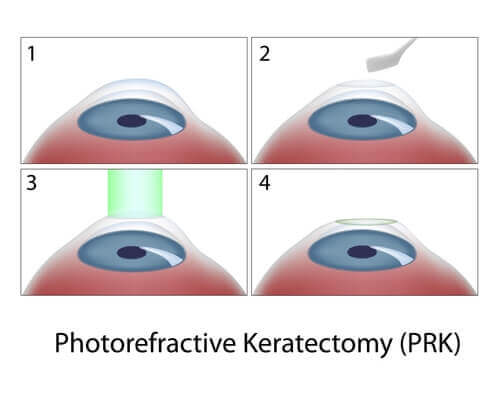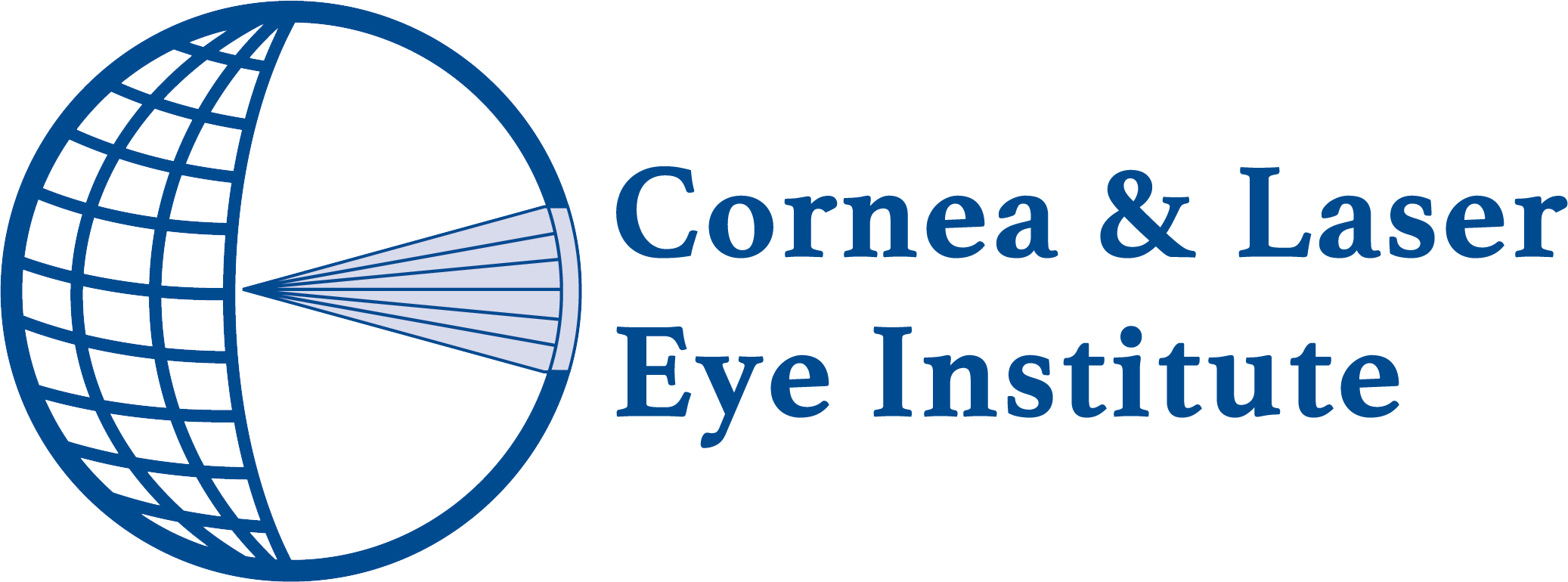
If you’re contemplating corrective eye surgery for improved vision, it’s important to get a clear understanding of all of the potential procedure options, as well as the potential risks. You might be wondering, which one is safer – PRK or LASIK? And are there any other options you should know about? Let’s find out.
What is PRK?
PRK stands for photorefractive keratectomy. It is a laser-based procedure that reshapes the cornea to correct myopia, hyperopia, and astigmatism. PRK has been around longer than LASIK, but both procedures are still widely used today.
During PRK, our expert surgeons will begin by removing the top layer of the cornea tissue, called the epithelium (Don’t worry – the epithelium is similar to your skin-after removal it will grow back). Next, our surgeons will use an extremely precise excimer laser to reshape the stromal layer of the cornea (underneath the epithelium). At the Cornea and Laser Eye Institute, we use the Wavelight EX500 excimer laser (Alcon, USA). Finally, a special bandage contact lens is placed on your eye to aid in the healing process. After about 5 days, our doctor will remove the bandage contact lens.
Recovery from PRK happens in two stages: First, the healing phase, which typically lasts a few days while the epithelium heals and regenerates. Second, the vision improvement stage, during which your vision can fluctuate and gradually improve for several weeks. That doesn’t mean you’ll be totally out of commission for that entire time. Most patients can drive within about one week of having PRK done. Your doctor will likely prescribe medicated eye drops and some pain medications to take afterwards. You will also need to come in for follow up visits.
What is LASIK?
LASIK stands for laser-assisted in situ keratomileusis. It is also a laser-based procedure that reshapes the cornea to correct myopia, hyperopia, and astigmatism. LASIK was developed after PRK, but long term both procedures are equally effective in correcting vision.
During LASIK, our surgeons will cut a small flap using a femtosecond laser. At the Cornea and Laser Eye Institute we use the low energy Z8 laser (Ziemer Ophthalmic USA) for this portion of the LASIK procedure. Once the flap is created, your CLEI surgeon will lift the flap and reflect it back. Then, similar to PRK, the stromal reshaping portion of the LASIK procedure is performed by the excimer laser. Afterwards, the flap is placed back into its original position and left to heal with the rest of the corneal tissue.
Therefore, the core difference between LASIK and PRK is the creation of a flap in LASIK, rather than the removal of the epithelium in PRK, to access the corneal stroma for reshaping. This reshaping is the same in the LASIK and PRK procedures.
Most people see much clearly after LASIK in about 24 hours after the procedure. Our office will give you lubricating and medicated eye drops to use post-op and you will need to come in for follow up visits. Residual irritation usually resolves within a few days. Some patients experience dry eyes after LASIK, but this side effect is generally mild and short-lived.
Safety Comparison: PRK vs LASIK
Both PRK and LASIK are highly effective and equally safe. Many patients prefer LASIK over PRK simply because the recovery timeline is faster. However, there are a few reasons one of our expert refractive surgeons may recommend PRK over LASIK as an alternative.
The most common reason that one of our CLEI surgeons will recommend PRK is because your cornea is too thin to safely create a LASIK flap and perform the excimer reshaping portion of the LASIK procedure. Since the PRK ablation occurs more anteriorly in the cornea, it may be preferred in such a case. We may recommend PRK if you lead an extremely active lifestyle which may lead to repeated trauma to your eye (i.e. you participate in boxing or martial arts). This would be to avoid any complications caused by a damaged flap during the healing process.
With all that information in mind, is PRK better than LASIK? Not necessarily. It all comes down to your specific vision needs and circumstances, which is why you should consult with our CLEI vision correction team about your options.
What About EVO ICL?
EVO ICL is another vision correction option, and an alternative to laser correction with LASIK or PRK. EVO ICL is an implantable collamer lens (ICL) that corrects vision without removing any corneal tissue. While LASIK and PRK are permanent and irreversible, EVO ICL can be easily removed with minimal to no side effects if at any point your vision changes or you simply wish to have it removed.
EVO ICL vision correction is also considered a safe and effective procedure, but like any eye surgery it carries the potential for side effects. These differ somewhat from the side effects that can occur with laser vision correction. The top side effects include undercorrection or overcorrection, which may require exchanging the ICL for a new lens, vision disturbances such as glares and halos or double vision, increased intraocular pressure, which would necessitate the removal or exchange of the lens, and cataracts caused by scar tissue on your natural lens. These potential side effects are rare but possible. Careful post-operative care will ensure that our doctors can promptly identify any complications and treat them if necessary.
PRK or LASIK: Making an Informed Decision
Your vision is a precious asset and you should never consider any kind of surgery without doing plenty of research and getting the necessary guidance to help you make an informed decision. When it comes to vision correction with PRK,LASIK. and EVO ICL, there is no one-size-fits-all solution. That’s why it is wise to consult with our experienced team to determine which procedure is right for you.
Conclusion
In conclusion, PRK and LASIK are two very similar procedures. While PRK involves removing the top layer of the cornea tissue, LASIK requires creating a small flap in the cornea tissue. Both techniques allow our surgeons to then correct the deeper layers of the cornea with laser technology. Both procedures are safe, effective, and permanent. EVO ICL on the other hand is a reversible procedure that involves implanting a corrective lens in your eye without removing any tissue from the cornea. It too is safe and may be a better option for certain patients.
In any case, personalized consultation and a thorough evaluation by a qualified professional is crucial to choosing the best possible procedure to correct your vision. Are you ready to consider your options? Book a free consultation with us today.




